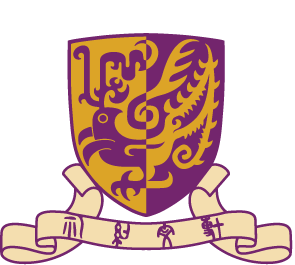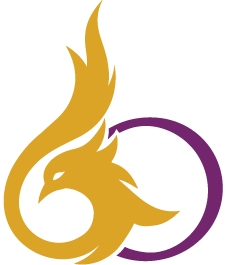
 | 80th Congregation (2016)Professor Randy Wayne SCHEKMANDoctor of Science |
The cells inside our bodies produce many different kinds of protein molecules. These molecules are created, stored and processed within a complex network of compartments in the same cell and then either used within the cell or else transported to different sites around the body, transmitting detailed signals or instructions to other cells to perform highly specific tasks. While being transported they are grouped together in tiny liquidfilled sac-like structures called vesicles. This vesicle transport system is very precise but it can also malfunction. When it does, such conditions as neurological diseases, diabetes and immunological disorders can arise. Therefore the study of this cellular transport system is of great importance in addressing such conditions. The system can be studied biochemically or genetically—or both. This is the story of someone who has been able patiently to unravel the functions of the 50 genes involved in the complex movement of vesicles within and between our cells.
As the Russian Revolution evolved many Jewish people migrated from the Soviet Union to Israel or the United States. Two brothers, Norman and Nathan, first went to Massachusetts, and then after going to fight with the British Foreign Legion in Palestine finally settled in Minnesota. Norman, a travelling salesman, married Rose, and they had three children. The middle one, Alfred, was born in 1927, and at the age of 20 he married the 18-year-old Esther. He became a mechanical engineer. Her parents were Romanian Jews who arrived in the United States in 1927, thus avoiding the Nazi Holocaust which followed not long after, but still struggling through the Depression. They too had settled in Minneapolis. In 1948 Alfred and Esther had a son called Ruvain in Hebrew, which became Randy in English; a daughter called Wendy; and in due course three more sons. When Randy was 10, the family moved to Southern California in the winter of 1959. He then discovered baseball, but perhaps more importantly for the world he had his first look through a toy microscope and saw how much life there was in one drop of pond scum. He also attended the school science fair and was captivated by the projects on display. He was determined to buy a proper microscope, but his mother kept borrowing his savings, so in frustration the boy rode his bicycle to the police station and reported her. The police didn't take this complaint too seriously, but at least it convinced his parents that he was serious, and a microscope was purchased the same day.
This interest in the microbial world was nurtured by friends and teachers through high school and into college. At UCLA, one of Randy’s teachers was a Nobel Laureate in Chemistry. When another professor told him to read James Watson’s new book on the molecular biology of the gene, his career as an experimental scientist and molecular biologist was almost determined. Short term placements followed at the University of Edinburgh, in the laboratory of a prominent bacterial geneticist, and at the biological laboratories at Harvard. The young scientist was accepted for graduate school into the Stanford laboratory of the leading DNA enzymologist of his era, Arthur Kornberg.
But before he could take up this position, Schekman’s career choice was further confirmed in a sad way, by a family tragedy. His sister Wendy was diagnosed with acute leukemia and passed away very rapidly. The immediate effect on her older brother was a decline in his grades; the long-term effect was a determination to fight disease. Then at Stanford he met his future wife Nancy and eventually graduated with the intellectual and technical skills as well as the emotional stability and determination that he would need to succeed.
A short post-doctoral placement at the University of California, San Diego was followed by a move in 1976 to the Department of Molecular and Cell Biology at the University of California, Berkeley, where Randy and Nancy have remained ever since, raising their two children. It was at Berkeley where Professor Schekman was to become one of the founding fathers of modern cell biology.
Before his pioneering work, the state-of-the-art technique in cell biology was electron microscopy. But the microscope, so beloved of the young Schekman, only gives a static picture of cellular structure. How does dynamic movement of materials such as proteins take place across these structures? How do the vesicles carry proteins through cell membranes? It proved difficult to study vesicles in ordinary mammal cells, so in what was at the time a controversial breakthrough Schekman and his team used baker’s yeast cells in their experiments. They used chemicals to create random genetic mutations in the cells and were able to identify those mutations that damaged the cellular transport system. Over many years of research, drawing in this way on both biochemical and genetic approaches, they were eventually able to identify close to 50 genes that are essential for the vesicle traffic between and within cells.
As a result of these discoveries, a biopharmaceutical company called Chiron was able to take genes from the virus hepatitis B and insert them into a yeast cell. The resulting cell produced the same proteins that appeared on the surface of the virus, but lacked the properties that make the virus dangerous. This became the basis for the world’s most widely produced hepatitis B vaccine. Perhaps even more significantly, biotech engineers have been able to use yeast cells to manufacture one-third of the world’s supply of recombinant human insulin. The Schekman lab is now also working on possible applications for Alzheimer’s disease.
Randy Schekman is now an Investigator of the Howard Hughes Medical Institute as well as Professor of Molecular and Cell Biology at Berkeley. He has been a member of the National Academy of Science since 1992. Among many other prizes and awards, he won the Gairdner International Award in 1996 and the Albert Lasker Award for Basic Medical Research in 2002. In 2013, along with Professors Thomas C. Südhof and James E. Rothman, he was awarded the Nobel Prize in Physiology or Medicine for his groundbreaking work on cell membrane vesicle trafficking.
Professor Schekman has also been an outstanding advocate for open science, as Editor-in-Chief of eLife, an open access e-journal, and as a critic of such high-profile publications as Nature, Cell and Science, which he says artificially restrict the number and type of articles published, and encourage research which is often just controversial or fashionable.
To end on a local note, Professor Schekman is Chairman of the Selection Committee for Hong Kong’s Shaw Prize in Life Science and Medicine, and is a collaborator with CUHK’s Area of Excellence Centre for Organelle Biogenesis and Function.
For his groundbreaking contributions to cell biology and thus to our understanding and treatment of disease, it gives me great pleasure, Mr Vice-Chancellor, to present to you Professor Randy Wayne Schekman, for the award of the degree of Doctor of Science, honoris causa.
This citation is written by Professor Simon Haines




